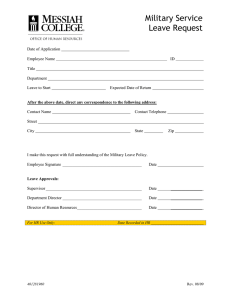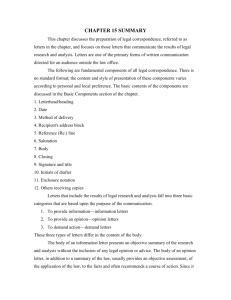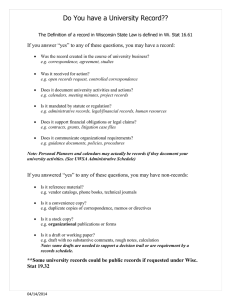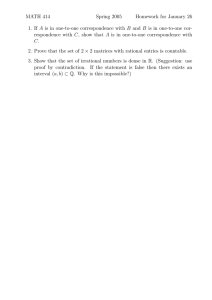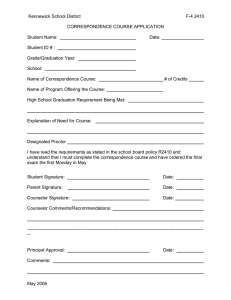Correspondence Analysis
advertisement
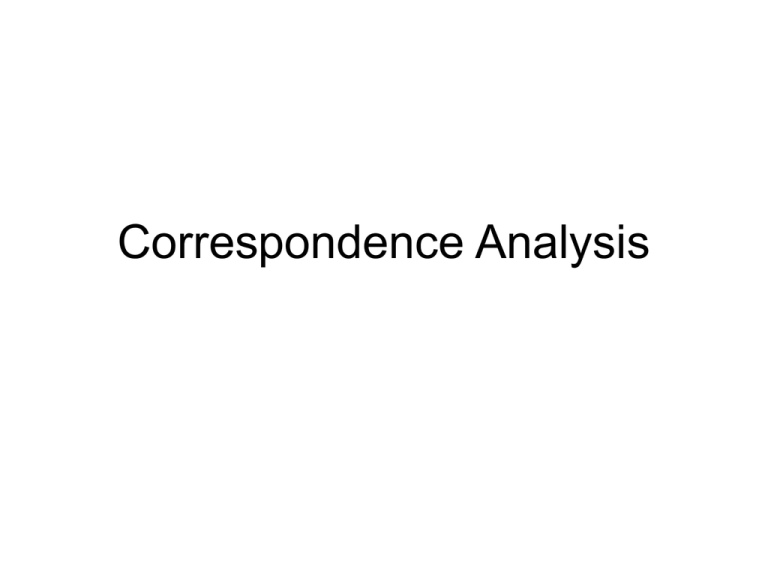
Correspondence Analysis Correspondence Analysis (CA) • It is an interdependence technique • It is a compositional technique • Advantages of CA: i) Used on categorical data ii) Can represent brands and attributes on a joint-space map iii) If original data not in categorical form it can easily be transformed to categories Correspondence Analysis • General procedure for Corresp Analysis 1. Form Contingency table 2. Perform chi-square test on table 3. Create metric distance measure from chisquare association measure 4. Decompose resulting matrix into orthogonal dimensions 5. Place categories on these dimensions so as to best account for associations Correspondence Analysis • Six-stage model building for CA • Stage 1: Objectives a. Association among row or column categories b. Association between row and col. categories • Stage 2: Research design - Requires only data matrix of non-negative entries e.g. cross tabulations Correspondence Analysis • Stage 3: Assumptions a. Relative freedom from assumptions b. Cross tabulated data represents both linear and non linear relationships • Stage 4: Deriving results and assessing fit a. Deriving results i. Chi-square values obtained for each cell ii. Chi-squared values standardized and converted to distance measure Correspondence Analysis • Stage 4: Deriving results and assessing fit (contd.) a. Deriving results (contd.) iii. Resulting matrix decomposed to obtain basic components or lower dimension solutions iv. These “factors” simultaneously relate rows and/or columns in a single joint plot Correspondence Analysis • Stage 4: Deriving results and assessing fit (contd.) b. Assessing fit i. Identify appropriate number of dim. ii. Assess importance of each dim. by their eigenvalues • Stage 5: Interpretation of results a. Identify a category’s association with other categories Correspondence Analysis • Stage 5: Interpretation of results (contd.) b. Select type of normalization c. Determine whether comparisons are to be made between row, column, or row and column categories • Stage 6: Validation of results a. Ensure generalizabilty b. Evaluate sensitivity of results to addition/ deletion of objects, attributes

